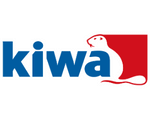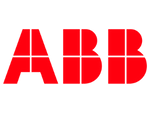As standard practice, we consider the market’s supply side (manufacturer) and demand side (User) to get the overall industry scenario. However, please find below the detailed research methodology.
Our company follows a 4-step method to derive the market size.
- Secondary Research:
Market data is collected through various paid and public domains, including annual reports, investor presentations, press releases, and financial reports. Furthermore, we can access paid sources such as Hoovers, Factiva, OneSource, etc.
We are also associated with professional associations such as IEEE, market-related journals, articles, certified publications, and internal databases. We gather the market information regarding the renewable energy certificate market, parent market and related markets.;
- Primary Research:
We validate the collected data through the market’s supply side (Manufacturers, Distributors, service providers, etc.) and the market’s demand side (users) to get a complete market scenario. Furthermore, we also gather key insights on the actual market size and impact factors contributing to the forecast data through independent consultants and industry experts. We conduct primary research in three ways: first, by telephone; second, we design and conduct surveys; and third, we are partnered with some of the key primary research providers.
- Market Size Estimation:
Once the data is gathered, we follow both methods, such as the top-down approach and the bottom-up approach, to get accurate data. In the top-down approach, we gather the information on a global level, region, and key segments operating in the market. Further, the data is bifurcated into the country level, type, and application/end-user industry. In the bottom-up approach, we gather company-level data (identifying the players and conducting interviews), key types, and their usage in the application/end-user industry at the country level. There are more than 30 players, out of which we conduct primary with 80% of the players. We also consider pricing analysis, key trends, and positive and negative impacting factors.
Once the market size is obtained, we conduct another round of primary research with manufacturers, industry experts, and key consumers to validate the data.
- Data Triangulation:
Once the data is validated, we further study the market segments and conduct primary interviews with the players across the value chain to gain better insights into the market’s key segments. Each segment is studied extensively, and market shares are provided based on its demand-supply, pricing, specifications, market penetration and adoption rate, and key impacting factors. We also provide descriptive analysis and reasoning on each of the leading segments in the market.
Once the data is collected and validated, our in-house team of 10 research analysts and experts conducts a discussion round in which each parameter is studied and discussed in detail. Post-discussion, the number punching is done. Once the report is ready, it goes through 2 levels of quality check and is then sent to our independent consultants to add more insights and validate the data provided.
Some of the secondary sources are as follows: (but not limited to)
- EDGAR (U.S Securities and Exchange Commission)
- Eurostat
- Factiva
- Global Database
- Hoovers
- IMF
- InfoUSA
- InsideView
- National Statistics
- Onesource
- Owler
- Projects Today
- ProQuest
- S&P
- Statista
- The Manifest
- UN ComTrade
- US Business Database
- WorldBank
- Others









